
Nam June Paik was a Korean artist. He worked with a variety of media and is considered to be the founder of video art. He is credited with the first use (1974) of the term "electronic super highway" to describe the future of telecommunications.
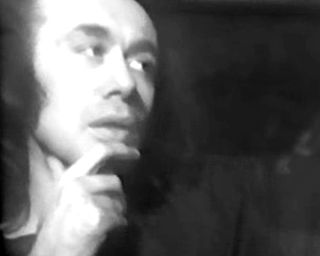
Vito Acconci was an American performance, video and installation artist, whose diverse practice eventually included sculpture, architectural design, and landscape design. His performance and video art was characterized by "existential unease," exhibitionism, discomfort, transgression and provocation, as well as wit and audacity, and often involved crossing boundaries such as public–private, consensual–nonconsensual, and real world–art world. His work is considered to have influenced artists including Laurie Anderson, Karen Finley, Bruce Nauman, and Tracey Emin, among others.

Alfred Earl "Al" Hansen was an American artist. He was a member of Fluxus, a movement that originated on an artists' collective around George Maciunas.
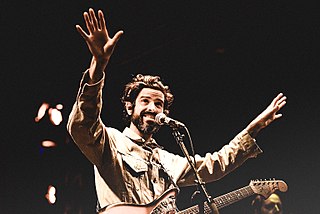
Devendra Obi Banhart is an American-Venezuelan singer-songwriter and visual artist. Banhart was born in Texas, and raised in Venezuela and California. In 2000, he dropped out of the San Francisco Art Institute to pursue a musical career. In 2002, Banhart released his debut album and is best known for his albums in the late 2000s such as Cripple Crow and Smokey Rolls Down Thunder Canyon. He has since expanded his career to incorporate his interest and training in the visual arts.
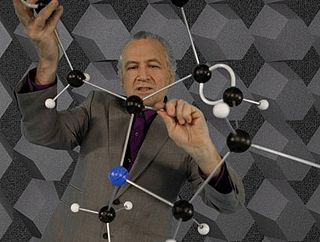
Gary Hill is an American artist who lives and works in Seattle, Washington. Often viewed as one of the foundational artists in video art, based on the single-channel work and video- and sound-based installations of the 1970s and 1980s, he in fact began working in metal sculpture in the late 1960s. Today he is best known for internationally exhibited installations and performance art, concerned as much with innovative language as with technology, and for continuing work in a broad range of media. His longtime work with intermedia explores an array of issues ranging from the physicality of language, synesthesia and perceptual conundrums to ontological space and viewer interactivity. The recipient of many awards, his influential work has been exhibited in most major contemporary art museums worldwide.

Doug Aitken is an American multidisciplinary artist. Aitken's body of work ranges from photography, print media, sculpture, and architectural interventions, to narrative films, sound, single and multi-channel video works, installations, and live performance. He currently lives in Venice, California, and New York City.

Chris Milk is an American entrepreneur, filmmaker, music video director, and immersive artist. He is co-founder and CEO of Within, a virtual reality technology company, and co-founder of Here Be Dragons, a virtual reality production company. Milk began his career directing music videos and commercials for leading artists and brands, and in subsequent years became best known for bridging the gap between emerging technologies and new mediums for storytelling.
Calvin Tomkins is an American author and art critic for The New Yorker magazine.
Miguel Calderón is a Mexican artist and film maker. In the 1990s, along with other artists, he founded the independent art space, La Panadería, in the Condesa neighborhood in Mexico City. Calderón received his BFA at the San Francisco Art Institute in 1994. He has worked in paint, photography, video, film and installation.
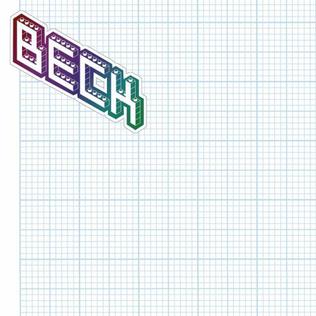
The Information is the tenth studio album by American musician Beck, released on October 3, 2006 by Interscope Records. It was produced and mixed by Nigel Godrich, with whom Beck recorded Mutations (1998) and Sea Change (2002). Recording took place from 2003 to 2006, with Beck concurrently working on 2005's Guero with the Dust Brothers. The album received positive reviews from critics and made several publications' year-end lists.

Kalup Linzy is an American video and performance artist who currently lives and works in Tulsa, OK. His performance are characterized by their low-tech quality, themes of community, socializing, family, the church, sexuality and homosexuality.

Lorna Simpson is an American photographer and multimedia artist whose works have been exhibited both nationally and internationally. In 1990, she became one of the first African-American woman to exhibit at the Venice Biennale. She came to prominence in the 1980s and 1990s with photo-text installations such as Guarded Conditions and Square Deal that questioned the nature of identity, gender, race, history and representation. Simpson continues to explore these themes in relation to memory and history using photography, film, video, painting, drawing, audio, and sculpture.

Michael Smith is an American artist known for his performance, video and installation works. He emerged in the mid-1970s at a time when performance and narrative-based art was beginning to claim space in contemporary art. Included among the Pictures Generation artists, he also appropriated pop culture, using television conventions rather than tropes from static media. Since 1979, much of Smith's work has centered on an Everyman character, "Mike," that he has portrayed in various domestic, entrepreneurial and artistic endeavors. Writers have described his videos and immersive installations as "poker-faced parodies" that sit on the edge between art and entertainment, examining ideas, cultural shifts and absurdities involving the American dream, consumerism, the art world, and aging. Village Voice critic Jerry Saltz called Smith "a consummate explorer of the land of the loser … limning a fine line between reality and satire [in] a genre sometimes called installation verité."

Lynda Benglis is an American sculptor and visual artist known especially for her wax paintings and poured latex sculptures. She maintains residences in New York City, Santa Fe, New Mexico, Kastellorizo, Greece, and Ahmedabad, India.
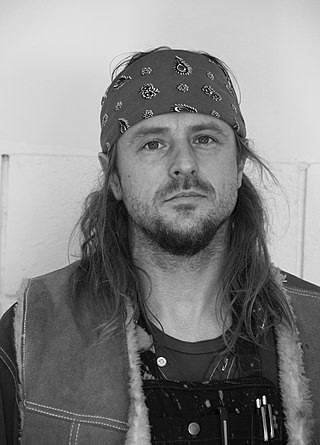
Sterling Ruby is an American artist who works in a large variety of media including ceramics, painting, drawing, collage, sculpture, video, and textiles. Often, his work is presented in large and densely packed installations. The artist has cited a diverse range of sources and influences including aberrant psychologies, urban gangs and graffiti, hip-hop culture, craft, punk, masculinity, violence, public art, prisons, globalization, American domination and decline, waste and consumption. In opposition to the minimalist artistic tradition and influenced by the ubiquity of urban graffiti, the artist's works often appear scratched, defaced, camouflaged, dirty, or splattered. Proclaimed as one of the most interesting artists to emerge this century by New York Times art critic Roberta Smith, Ruby's work examines the psychological space where individual expression confronts social constraint. Sterling Ruby currently lives and works in Los Angeles. His studio is located in Vernon, south of downtown Los Angeles.
Adam Pendleton is an American conceptual artist known for his multi-disciplinary practice, involving painting, silkscreen, collage, video, performance, and word art. His work often involves the investigation of language and the recontextualization of history through appropriated imagery.

Jerry Beck is an American animation historian, author, blogger, and video producer.
Stephen Laub is an American artist who works in performance, video, and sculpture.

John Sanborn is a key member of the second wave of American video artists that includes Bill Viola, Gary Hill, Dara Birnbaum and Tony Oursler. Sanborn's body of work spans the early days of experimental video art in the 1970s through the heyday of MTV music/videos and interactive art to digital media art of today.
Martin Beck is a visual artist based in New York and Vienna. His artworks often derive from in-depth research into narratives from the fields of architecture, design and popular culture and are characterized by his usage of diverse media, including installation, photography, video, writing, sculpture, and drawing. Beck also works collaboratively and has, since the late 1990s, co-authored various exhibitions, publications, and exhibit design projects with artist Julie Ault.















